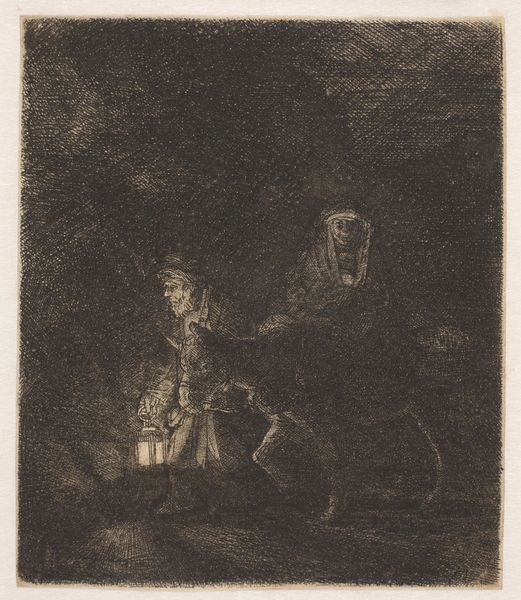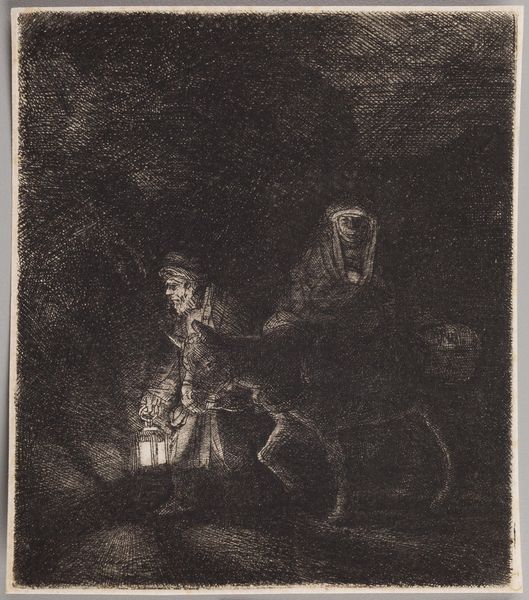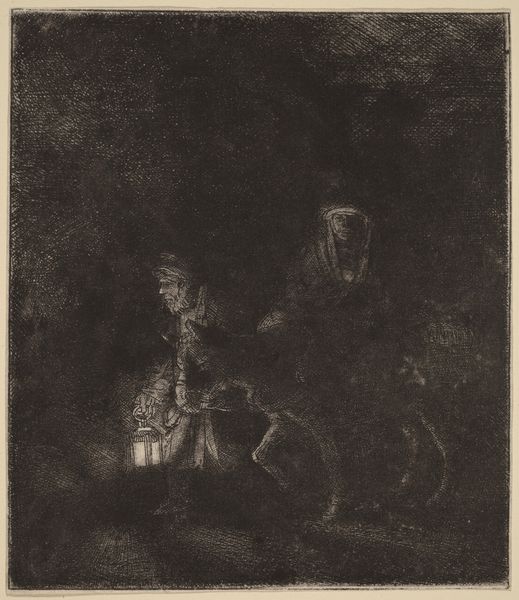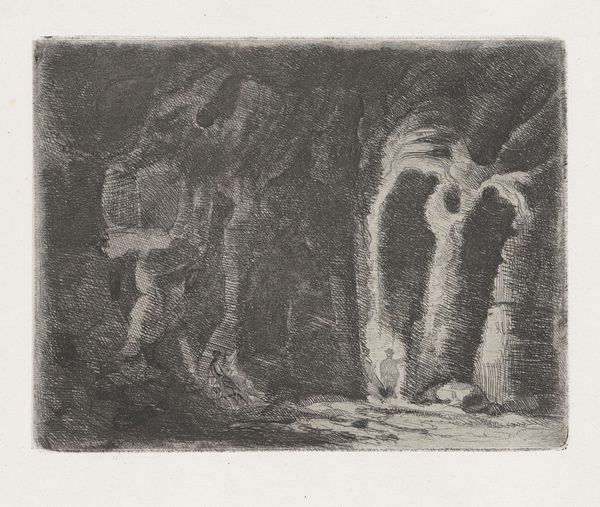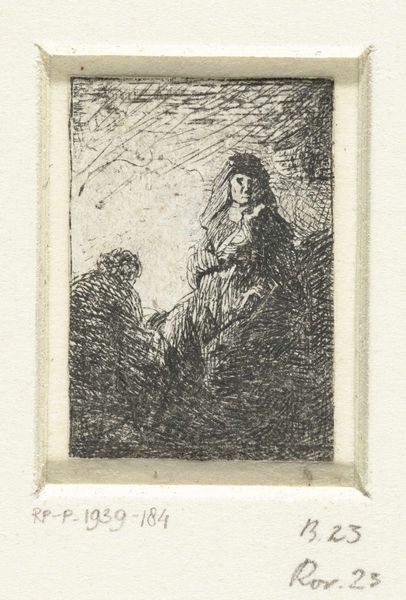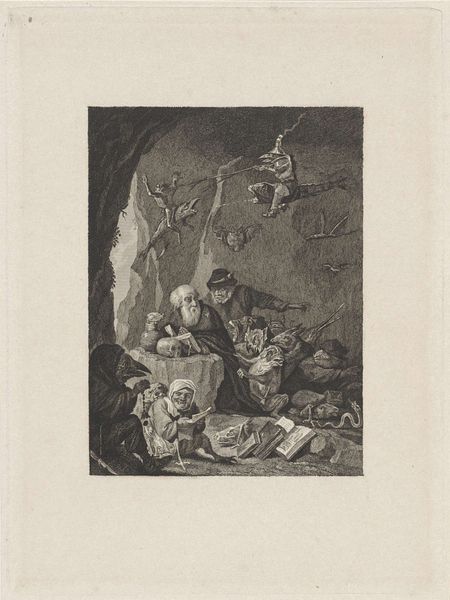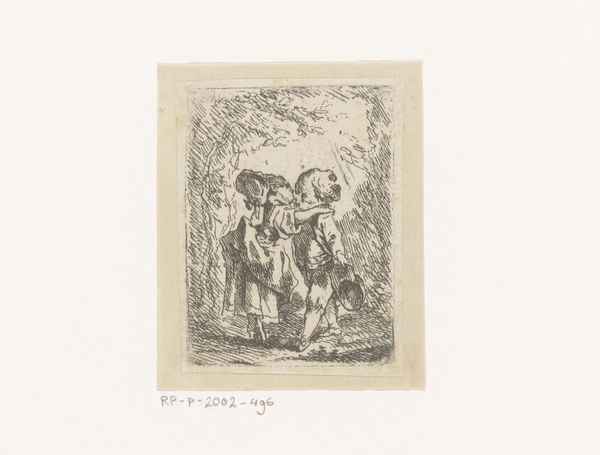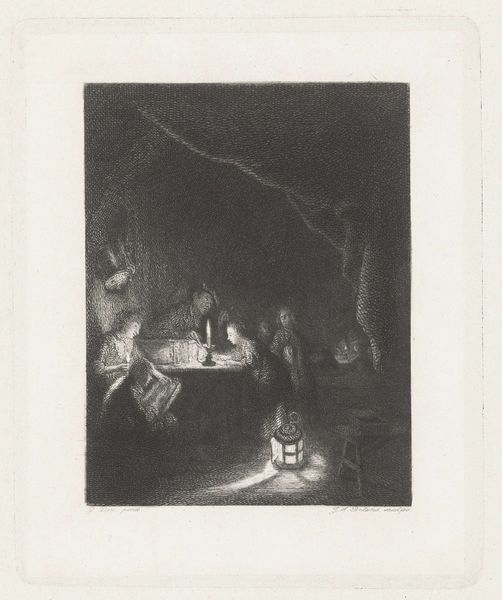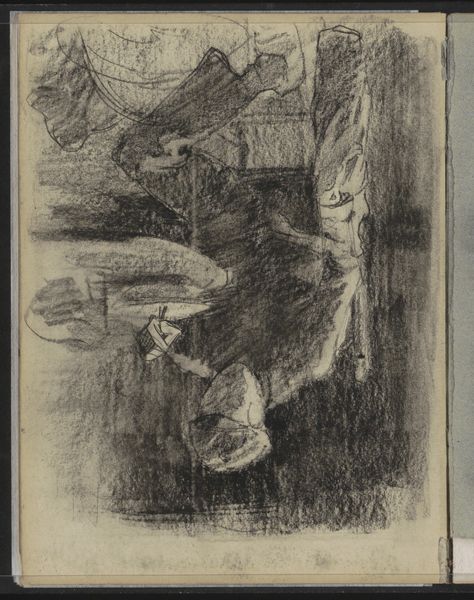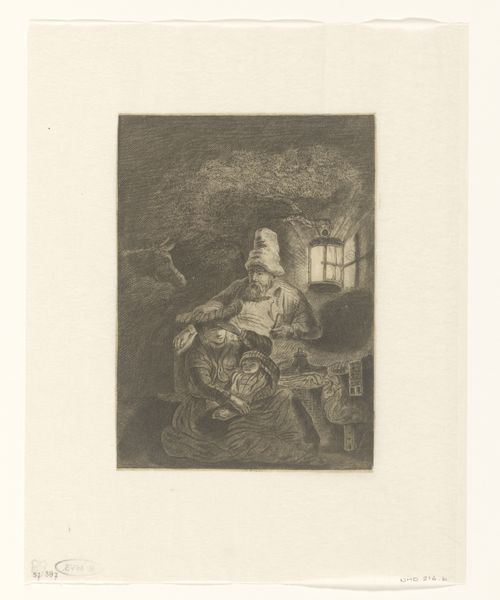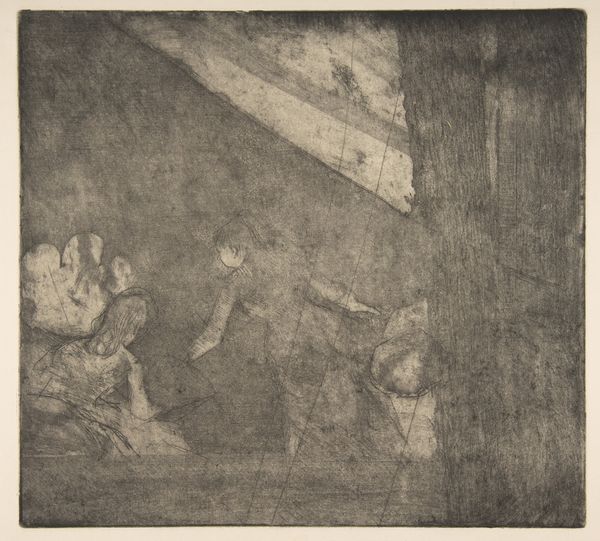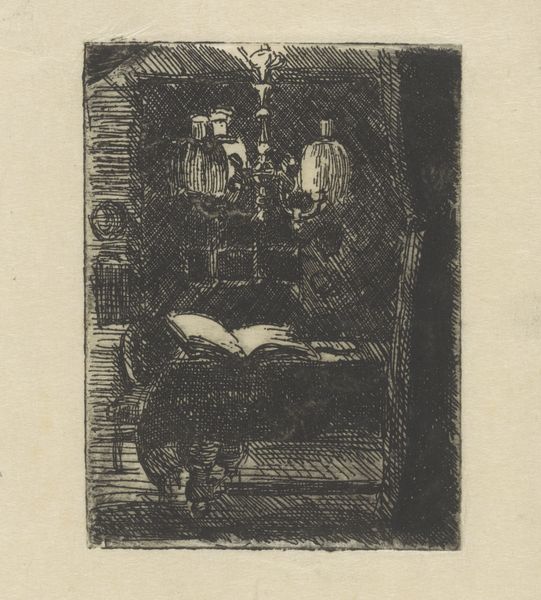
print, etching
#
narrative-art
#
baroque
# print
#
etching
#
old engraving style
#
landscape
#
figuration
#
history-painting
Dimensions: height 127 mm, width 110 mm
Copyright: Rijks Museum: Open Domain
Curator: Here we have "Flight into Egypt: Night", an etching by Rembrandt van Rijn. It's held here at the Rijksmuseum and, while it's dated 1651 to 1808, it’s generally attributed to around 1651. Editor: My first thought? Oof, the mood. It’s thick with night, like you could reach out and touch the inky black. Curator: That profound darkness speaks to the narrative itself: the biblical flight of Mary, Joseph, and Jesus into Egypt to escape Herod’s infanticide. The landscape and their movement through it can be understood as metaphors for vulnerability, persecution, and the search for asylum, resonating deeply with contemporary issues of migration and displacement. Editor: Exactly! And that single, small lantern piercing through… it's not just a light source; it's hope. Think of the technical skill. This isn’t some grand, sweeping oil painting, it’s an etching. Itty-bitty lines creating *this* kind of drama. Curator: Absolutely, the mastery lies in Rembrandt's command of light and shadow—his chiaroscuro. The etching medium, with its capacity for fine lines and tonal variations, is essential here. It amplifies the emotional weight. Consider the historical context too. Religious persecution and displacement were rampant during Rembrandt's time, so this piece may be less a literal illustration and more a commentary on humanity's struggle for survival. Editor: That makes you wonder what his internal dialogue was at the time of its creation...it also feels surprisingly intimate, like we are intruding on their private moment. It doesn’t feel posed or heroic—just real, you know? Raw. Curator: That “rawness,” as you say, challenges conventional idealized depictions of biblical scenes that often served the powerful, elite classes. Here, Rembrandt invites a more personal, relatable interpretation, disrupting the narrative power structures of his time. Editor: Looking at this, I get the urge to pick up my own needles and maybe start a little "Night Flight" series in response. It has activated my art-brain. Curator: It's precisely that enduring ability to inspire, question, and provoke dialogue across centuries that secures Rembrandt’s enduring significance. Editor: Yeah. I came in seeing a tiny etching, and I'm leaving feeling like I experienced a universe of shadow and hope. That's the power, right?
Comments
No comments
Be the first to comment and join the conversation on the ultimate creative platform.
